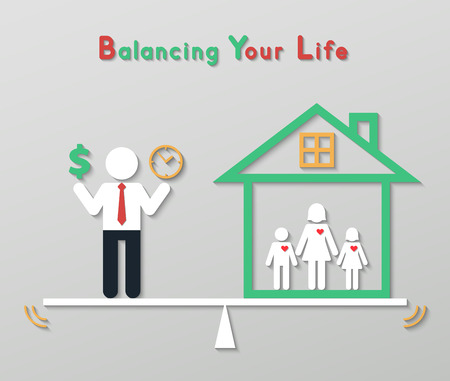1. Introduction: Understanding the U.S. Rental Property Market
The U.S. rental property market is a massive and dynamic part of the real estate landscape, offering diverse opportunities for investors. Whether you’re considering single-family homes or multi-family buildings, understanding what’s happening in today’s market is essential before diving into any investment.
Current Trends in the American Rental Market
Over the past few years, several key trends have shaped rental property investment:
- Rising Home Prices: With home prices hitting record highs in many cities, more Americans are choosing to rent instead of buy.
- Growing Demand for Rentals: Both millennials and baby boomers are fueling demand—millennials often delay buying homes due to affordability, while boomers downsize and prefer renting for flexibility.
- Suburban Shift: There has been a notable migration from dense urban centers to suburban areas, especially post-pandemic, driving up demand for single-family rentals (SFRs) with more space.
- Institutional Investment: Big investors are entering the market, particularly in single-family rental portfolios, making competition tougher but also validating the long-term potential of rental properties as an asset class.
Main Drivers of Rental Demand
| Demand Driver | Description |
|---|---|
| Affordability Concerns | High mortgage rates and home prices push more people toward renting. |
| Lifestyle Flexibility | Younger renters value mobility; retirees seek less responsibility. |
| Remote Work Trends | People move to new locations with better quality of life—boosting both SFR and multi-family demand in suburbs and smaller cities. |
| Population Growth | Certain regions (Sun Belt, Southeast) see population influxes, increasing housing needs. |
Setting the Stage: Single-Family vs. Multi-Family Investments
Given these trends, investors face a crucial decision: should they put their money into single-family or multi-family properties? Each option offers different risk profiles, management styles, and income potentials. In this series, we’ll break down how each type fits into today’s market so you can make the most informed choice possible.
2. Defining Single-Family and Multi-Family Rentals
When considering real estate investment in the U.S., its important to understand the core differences between single-family and multi-family rental properties. These differences affect everything from potential cash flow to the types of tenants youll attract. Below, well break down what sets these property types apart in terms of structure, tenant profiles, and common location trends.
What is a Single-Family Rental?
A single-family rental is a standalone residential property designed for one household. Think of it as a typical house with its own yard, driveway, and no shared walls with neighbors. This type of property is often found in suburban neighborhoods or quieter city areas.
What is a Multi-Family Rental?
A multi-family rental consists of two or more separate housing units within one building or complex. Common examples include duplexes (two units), triplexes (three units), fourplexes (four units), and larger apartment buildings. These properties can be located in both urban and suburban areas but are most commonly found where housing density is higher.
Key Differences at a Glance
| Feature | Single-Family | Multi-Family |
|---|---|---|
| Structure | Detached home, single unit per property | Multiple units in one building or complex |
| Typical Tenant Profile | Families, long-term renters, individuals seeking privacy | Singles, young professionals, small families, roommates |
| Location Trends (U.S.) | Suburban neighborhoods, quieter city zones | Cities, downtown areas, high-density suburbs |
| Ownership & Management | Easier for first-time investors, usually one tenant to manage | More complex management, multiple tenants at once |
Understanding Location Trends in the U.S.
In the United States, single-family rentals are popular in suburban areas where space and privacy are valued. They attract tenants looking for stability—often families with children or professionals who want a yard and garage. Multi-family properties are more prevalent in cities where land is scarce and demand for affordable rentals is high. These locations appeal to renters who prioritize convenience and proximity to work or public transportation.
![]()
3. Financial Considerations and Income Potential
A Data-Driven Comparison: Single-Family vs. Multi-Family Rentals
When it comes to real estate investing, understanding the financial aspects is key. Let’s break down the numbers for both single-family and multi-family rental properties so you can make an informed decision that fits your goals and risk tolerance.
Cash Flow and Monthly Income
Multi-family properties often generate more monthly cash flow compared to single-family homes because you have multiple tenants paying rent. However, higher potential income usually comes with increased responsibility and possibly higher vacancy risks if several units go empty at once.
| Property Type | Average Monthly Cash Flow* | Vacancy Risk |
|---|---|---|
| Single-Family | $200–$400 per property | Higher—one vacancy = 100% loss |
| Multi-Family (2-4 Units) | $500–$1,200 per building | Lower—one vacancy = partial loss |
*Actual results vary by location and market conditions.
Entry Costs & Financing Accessibility
Getting started with a single-family rental generally requires less upfront capital. Down payments, closing costs, and required reserves are typically lower. Multi-family properties cost more up front but may offer better financing terms for owner-occupants (like FHA loans for up to 4-unit properties).
| Property Type | Typical Down Payment (%) | Loan Options | Total Entry Cost Range* |
|---|---|---|---|
| Single-Family | 3%–20% | Conventional, FHA, VA | $10,000–$60,000+ |
| Multi-Family (2-4 Units) | 3.5%–25% | Conventional, FHA (owner-occupant), Commercial (5+ units) | $30,000–$150,000+ |
*Based on median U.S. home prices as of 2024.
Appreciation Potential & Long-Term Value Growth
Historically, single-family homes appreciate faster than small multi-family buildings because they appeal to a larger pool of buyers (families and investors alike). Still, multi-family properties can see strong appreciation in hot rental markets or when improvements boost rent rolls.
ROI & Risk Management Focus
The Return on Investment (ROI) depends on your strategy:
- Single-Family: Often lower ROI but less management hassle; easier to sell individually.
- Multi-Family: Higher ROI potential through scale and forced appreciation (raising rents or cutting costs); higher management complexity.
Risk Tip: Vacancy risk is concentrated in single-families—if your tenant leaves, your income drops to zero until its re-rented. In a fourplex, losing one tenant still leaves you with three paying renters.
Summary Table: Key Financial Metrics at a Glance
| Single-Family Rental | Multi-Family Rental (2-4 Units) | |
|---|---|---|
| Upfront Cost* | $10k–$60k+ | $30k–$150k+ |
| Monthly Cash Flow* | $200–$400/property | $500–$1,200/building |
| Lending Ease (Owner Occupant) | Easier; many options | Easier for 2-4 units; harder for 5+ units (commercial loans needed) |
| Appreciation Rate* | Slightly higher/steadier historically | Slightly lower/market dependent; can force value via NOI improvements |
| Main Risk Factor* | Total vacancy = no income; slower turnover recovery | Diversified tenant base; more complex operations |
*Based on typical U.S. market data as of 2024; actual results will vary by city and neighborhood.
4. Operational Demands: Management and Maintenance
Daily Management Tasks
Managing a rental property involves more than just collecting rent. The daily tasks can vary significantly between single-family and multi-family properties. Here’s a quick comparison:
| Task | Single-Family Home | Multi-Family Property |
|---|---|---|
| Rent Collection | One tenant, simple process | Multiple tenants, more payments to track |
| Tenant Communication | Direct with one family or person | Multiple tenants, more frequent interactions |
| Lease Renewals | Once per lease term | Staggered or simultaneous, depending on lease structure |
| Inspections | Simpler scheduling and fewer units to check | More units, requires systematic planning |
Common Maintenance Requirements
The type of maintenance you’ll face also depends on the property type:
- Single-Family Homes: You’re responsible for everything from the roof to the yard. Repairs tend to be less frequent but can be costly (think: HVAC replacement or new roof).
- Multi-Family Properties: Shared systems (like boilers or roofs) mean repairs often impact several tenants at once. Regular upkeep is essential for common areas—hallways, laundry rooms, and exterior grounds.
Maintenance Overview Table
| Maintenance Item | Single-Family Home | Multi-Family Property |
|---|---|---|
| Lawn Care/Landscaping | Your responsibility or tenant’s (depends on lease) | You handle for all units and common areas |
| Plumbing/Electrical Issues | Affects only one household at a time | Can affect multiple units if shared systems fail |
| Pest Control | Easier to manage; isolated problems are typical | Pests can spread quickly; preventive treatments needed regularly in shared spaces |
The Scalability Factor: Managing One vs. Many Units
If you’re aiming to build wealth through real estate, scalability matters. Managing a single-family home is straightforward, but your growth potential is limited—you’ll need to acquire more properties to increase cash flow. Multi-family properties let you scale up faster since you have multiple income streams under one roof. However, the complexity of managing several tenants—and maintaining shared amenities—grows as well.
If you plan to hire a property manager, know that most professionals charge a percentage of rent collected. While this fee might be higher for multi-family buildings due to increased workload, economies of scale can make it worthwhile as your portfolio grows.
Key Takeaway:
If you want simple day-to-day management and lower maintenance complexity, single-family homes are easier for DIY landlords. If you’re open to handling (or outsourcing) more moving parts in exchange for bigger growth potential, multi-family rentals could be your lane.
5. Market Volatility, Vacancy, and Exit Strategies
How Market Cycles Impact Single-Family vs. Multi-Family Rentals
Market conditions in the U.S. can swing up or down, affecting real estate investments differently depending on the property type. Lets break down how single-family and multi-family rental properties respond to market volatility, deal with vacancies, and what your options are when it’s time to sell or refinance.
Occupancy Rates & Tenant Turnover
| Single-Family Rentals | Multi-Family Rentals | |
|---|---|---|
| Occupancy Rates | Typically stable in suburban areas; can drop in downturns as families look for cheaper options. | Often higher due to diversified tenant base; small rent changes less likely to empty whole building. |
| Tenant Turnover | Lower turnover; tenants stay longer (often families). | Higher turnover; more frequent move-ins and move-outs (students, young professionals). |
Market Volatility: Risk & Resilience
Single-Family Rentals
- Sensitivity: Prices often track closely with broader housing market trends—can see bigger value swings during booms or busts.
- Vacancy Risk: One vacancy means 100% of your rental income is gone until a new tenant moves in.
- Exit Flexibility: Easier to sell individually since you’re appealing to both investors and regular homebuyers.
Multi-Family Rentals
- Sensitivity: Values are driven more by rental income than comparable sales, so they may be less volatile if cash flow remains steady.
- Vacancy Risk: Losing one tenant out of ten won’t hurt as much—you still collect most of your rent.
- Exit Flexibility: Usually sold to other investors; larger properties may take longer to sell but could attract institutional buyers.
Selling and Refinancing Options in the U.S.
| Single-Family Rentals | Multi-Family Rentals | |
|---|---|---|
| Selling Process | Easier; can sell to homeowners or landlords. Quicker transactions in most markets. | Mainly investor buyers; sale may take longer but can result in bigger lump sums. |
| Refinancing Options | Straightforward with traditional lenders; based on comparable sales and credit score. | Lenders focus on property’s net operating income (NOI) and debt service coverage ratio (DSCR). |
| Liquidity During Downturns | Tends to be better; more buyers even in slow markets. | Tougher if rents fall, but income focus can help stabilize value compared to fluctuating home prices. |
The Bottom Line on Navigating Market Changes
If you want stability and flexibility when selling, single-family rentals might feel safer. If you prefer spreading risk across multiple tenants and want value tied closely to rental income rather than market comps, multi-family could be a better fit. Your comfort level with market swings—and your long-term investment plans—should guide your choice between these two property types.
6. Tax Implications and Legal Factors
Understanding the Tax Benefits
When investing in rental properties, taxes can make a big difference in your overall returns. Both single-family and multi-family properties offer valuable tax benefits, but there are some key differences you should know about.
Depreciation Rules
Depreciation lets you deduct a portion of your property’s value each year to account for wear and tear. Here’s how it breaks down:
| Property Type | Depreciation Schedule (Residential) |
|---|---|
| Single-Family | 27.5 years |
| Multi-Family | 27.5 years (per unit) |
This means that both single-family and multi-family residential rentals use the same 27.5-year schedule, but with multi-family, you may have more opportunities to use cost segregation (splitting out components like appliances or roofs) to accelerate depreciation and save more on taxes each year.
Other Key Tax Benefits
| Benefit | Single-Family | Multi-Family |
|---|---|---|
| Mortgage Interest Deduction | Yes | Yes (usually larger amounts possible due to higher loan balances) |
| Operating Expense Deductions | Standard expenses (maintenance, insurance, property management) | Often larger scope due to more units; can include payroll for onsite staff, common area costs, etc. |
| 1031 Exchange Eligibility* | Yes – defer capital gains by swapping for similar property | Yes – commonly used in scaling portfolios |
| Passive Loss Rules** | Might be limited if income is high or if you’re not a real estate professional | Might be easier to qualify as a real estate professional with more units/scale, unlocking more deductions |
*Section 1031 allows investors to defer capital gains taxes when exchanging one investment property for another “like-kind” property.
**Passive loss rules can limit how much of your real estate losses offset other income unless you meet certain criteria.
Legal and Regulatory Considerations
Zoning and Local Regulations
Single-Family: Usually faces fewer zoning restrictions, but many cities have strict rules about converting single-family homes into multi-unit properties or short-term rentals. Homeowner association (HOA) rules may also apply.
Multi-Family: More likely to be subject to local ordinances regarding fire safety, accessibility (ADA compliance), rent control, and tenant protections. Larger buildings often require regular inspections and additional permits.
Landlord-Tenant Laws and Compliance Requirements
| Single-Family Rentals | Multi-Family Rentals | |
|---|---|---|
| Eviction Process Complexity | Simpler; fewer tenants involved per property | Larger scale increases risk of disputes and compliance issues across multiple tenants at once |
| Fair Housing Laws & Anti-Discrimination Rules | Apply; smaller scope per property | Larger scale means greater exposure—property managers must be extra careful with screening & policies |
| Safety & Habitability Standards | Largely standardized; focus on basic living conditions | Adds complexity: fire exits, stairwells, elevators, common spaces must all meet code |
Pro Tip:
If youre investing out-of-state or buying larger multifamily properties, consider consulting a real estate attorney or CPA familiar with local laws—regulatory details can vary widely from city to city.
The bottom line: both single-family and multi-family investments come with solid tax perks—but the bigger your investment gets, the more complex your legal landscape becomes. Understanding these factors upfront helps you avoid costly surprises down the road.
7. Conclusion: Matching Strategy to Investor Goals
Choosing between single-family and multi-family rental properties isnt a one-size-fits-all decision. It all comes down to your unique investment profile—how much risk you’re comfortable taking, the time you can commit, and your long-term financial goals. Here’s how American investors can align their real estate strategy with what matters most to them.
Understanding Your Investment Profile
| Investor Type | Risk Tolerance | Time Commitment | Preferred Property Type |
|---|---|---|---|
| Conservative Beginner | Low | Limited | Single-Family |
| Busy Professional | Moderate | Limited/Outsource via property management | Single-Family or Small Multi-Family |
| Aggressive Growth-Seeker | High | Willing to be hands-on or scale up management team | Multi-Family (5+ units) |
| Diversifier/Portfolio Builder | Medium-High | Flexible/Scalable with experience | Mix of Both Types |
Practical Guidance for Your Next Steps
- If stability and simplicity are priorities: Single-family rentals typically offer lower tenant turnover and easier financing. These are ideal if you prefer a “set it and forget it” approach or are just starting out.
- If maximizing cash flow and scalability matters more: Multi-family properties let you spread risks across multiple units and can produce higher income per square foot. They do require more active management, but property managers can help lighten the load.
- If you want portfolio diversification: Consider blending both types over time, balancing steady income from single-family homes with growth potential from multi-family investments.
- If your goal is long-term wealth building: Both strategies can work well, but leverage (using borrowed funds) tends to scale faster in the multi-family space if managed carefully.
Key Takeaways for U.S. Investors:
- Your investment should fit your lifestyle—don’t overextend your time or stress levels chasing higher returns if it doesn’t suit you.
- The U.S. housing market offers ample opportunities in both sectors; choose locations with strong job growth and low vacancy rates for best results.
- Start small, learn as you go, and build a network of advisors, agents, and property managers who know your local market.
The Bottom Line:
The right choice depends on matching your personal resources and appetite for risk to the property type that meets your financial objectives. There’s no perfect answer—just the best fit for where you are today and where you want your wealth journey to go tomorrow.


